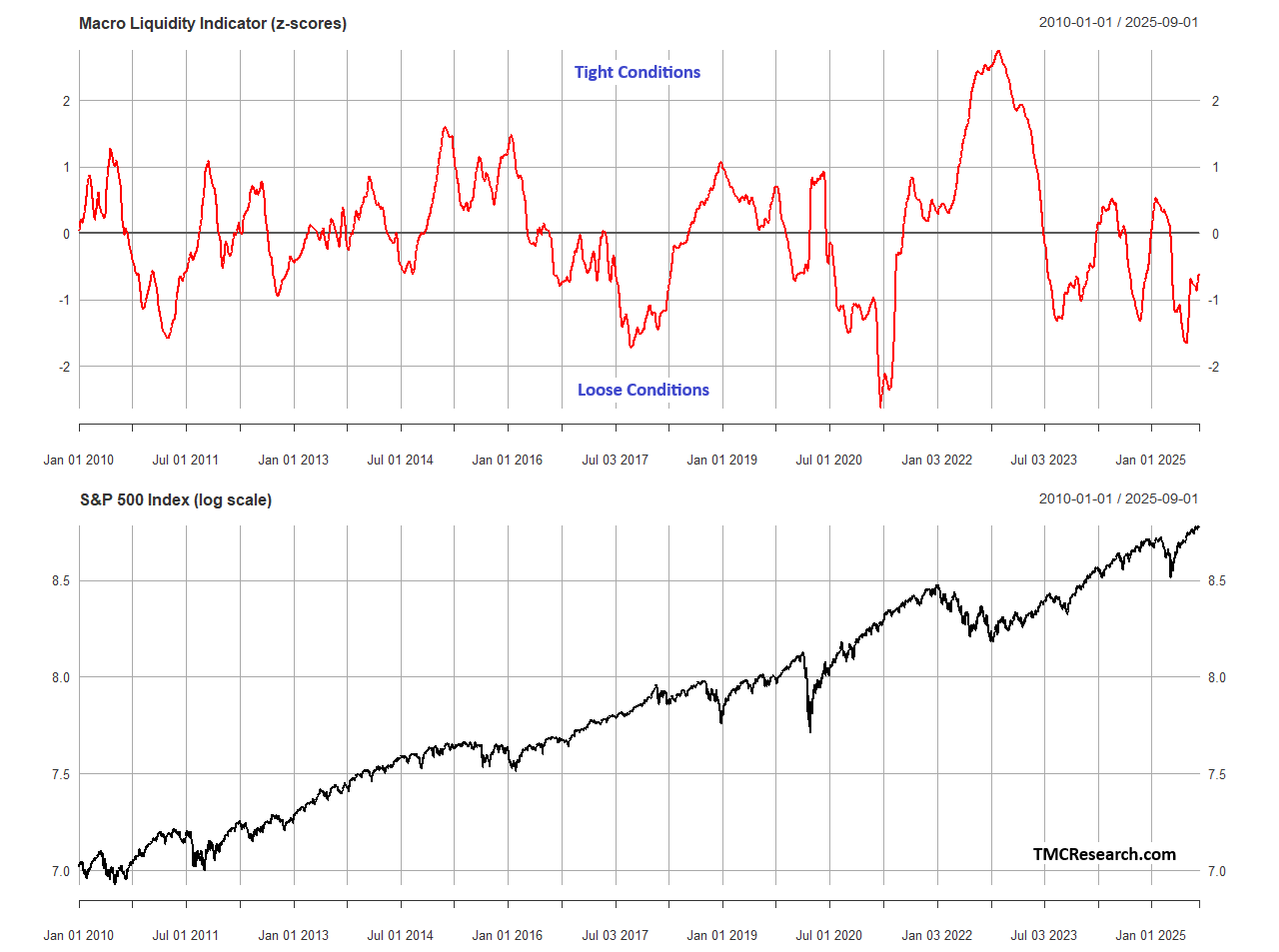Relatively Loose Macro Conditions Remain A Tailwind For Stocks
By James Picerno | The Milwaukee Company
A proxy for macro conditions has been relatively supportive for equities, which may help explain the stock market’s resilience lately
When macro conditions turn tight, headwinds for equities could strengthen
Macro conditions look set to remain favorable for the near term
Identifying why the stock market trends one or the other is a slippery affair, especially in the short term, but a broad measure of macro “liquidity”1 conditions is usually on the short list of relevant influences. Perhaps, then, it’s no surprise that the recent macro bias on this front (defined below) has been favorable, which suggests it’s been a key reason for the stock market’s recent resilience despite the potential for headwinds from tariffs and hints that economic growth is slowing.
All else equal, equities are relatively vulnerable when macro conditions are tight, as they were to a relatively extreme degree going into 2022, a rough year for stocks, as shown below.
Coincidence? Unlikely. Macro liquidity alone may not determine the path for equities, but it’s often a crucial variable.
There are, of course, multiple factors at any given time that move the market, each with varying degrees of influence, depending on the state of affairs at each point in time. Although it’s impossible to prove a counterfactual, it’s reasonable to assume that if macro conditions had been tighter recently the market would have struggled to rebound from the April tariff shock.
When macro liquidity skews negative, as it eventually will at some point, stocks will face a tougher road for keeping the bulls running. Other factors may offset tighter conditions, and so it’s never clear how or when a shift in macro conditions will trigger a change in market sentiment.
This much is clear: macro liquidity deserves to be monitored as a potential early sign that the bias is transitioning from bullish to bearish, or vice versa. On that basis, it appears that peak liquidity has passed for the current cycle. Although conditions have turned relatively tighter, a clear liquidity bias remains intact.
That doesn’t mean the stock market can’t suffer an extended correction in the current climate, but at the moment it’s likely that factors other than macro liquidity would be the catalysts that derail the bullish trend.
The Macro Liquidity Indicator in the chart above uses five inputs to assess conditions: the US dollar, the high-yield bond spread, commercial bank loans and leases, consumer inflation and the US 10-year Treasury yield. There are many variations on measuring this risk factor, but the mix shown above is a sensible first approximation.
The term “liquidity” is used here in reference to overall monetary and financial conditions, and not to be confused with actual market liquidity.



